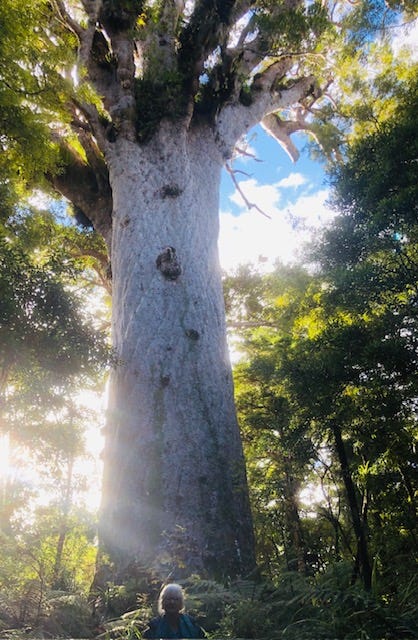Twelve Thousand Miles To Visit A Tree
In New Zealand
I was sitting in a circle of women at the close of our three day retreat in Glastonbury, January 2020 just before the beginnings of a changed world. One of the women talked about kauri trees - I’d never heard of them before, and in my mind, I saw the word as cowrie, like the shells. Then the next woman said a word, a name - that I didn’t even hear clear…



